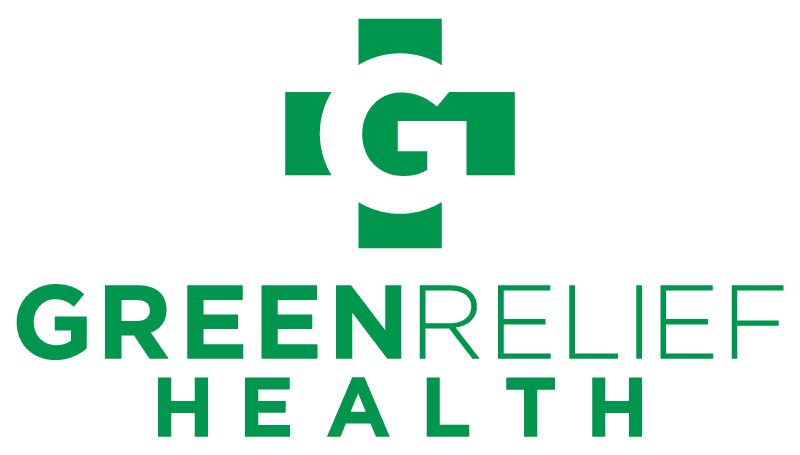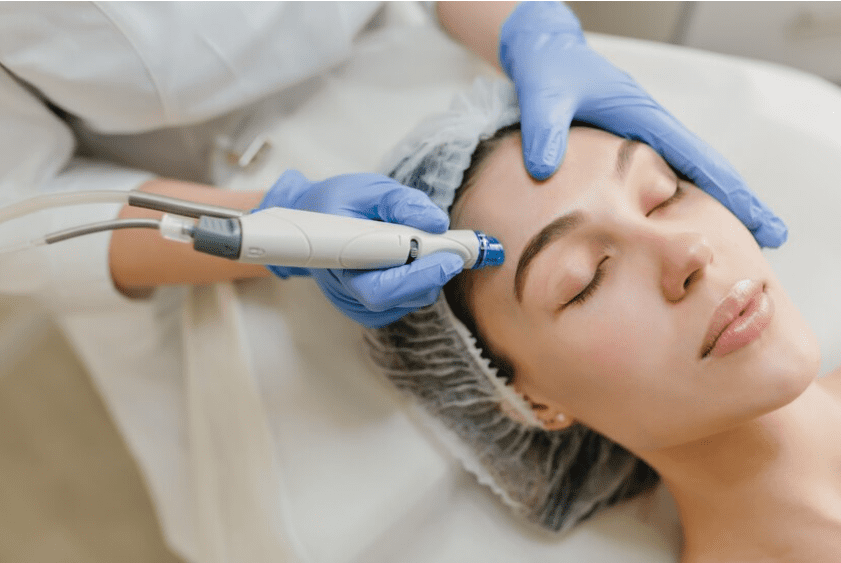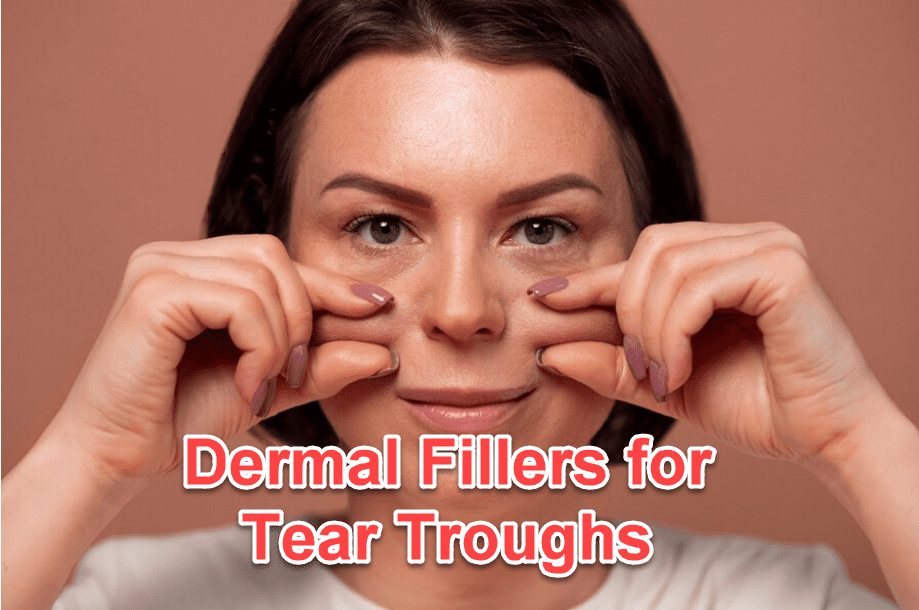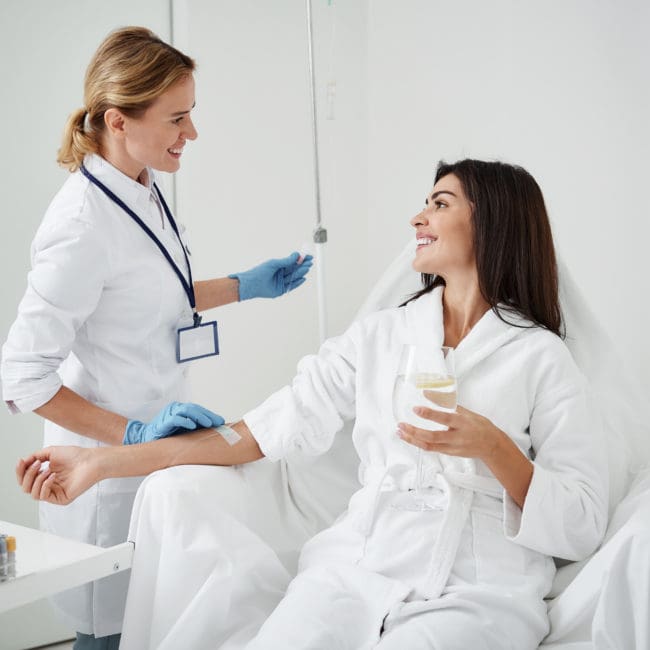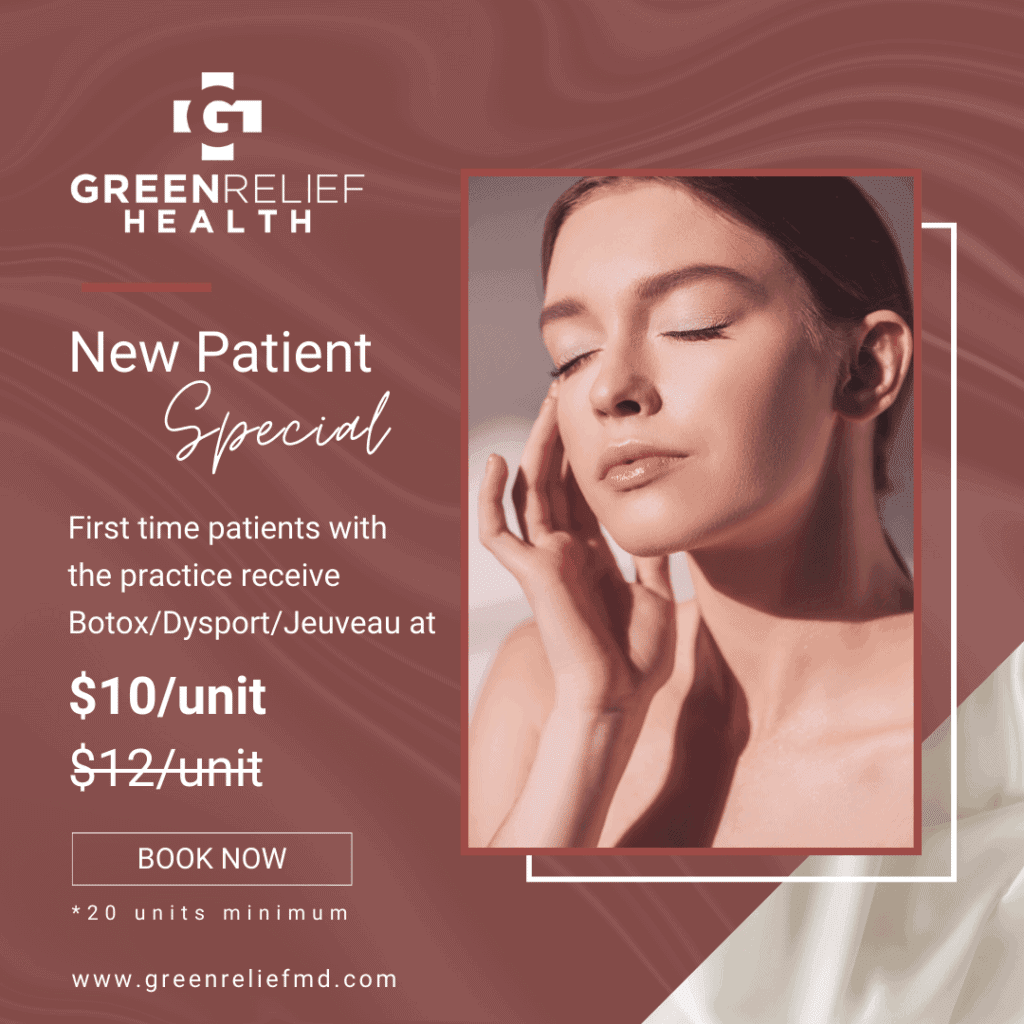The natural aging process combined with sun damage, genetics, stress, and other factors can take its toll on our skin. As we get older, fine lines and wrinkles become more apparent, skin elasticity decreases, and previously clear complexions can suddenly become prone to breakouts.
For those who struggled with severe acne in their youth, scarring is often an unfortunate leftover, even when the acne itself clears up. Both deep pits and raised scars can be challenging to cover up and may cause self-consciousness.
Luckily, advances in dermatology have led to innovative solutions for regenerating scarred skin and revealing a more even, youthful complexion. Two of the most effective options are microneedling and chemical peels.
At Green Relief Health Med Spa & Medical Weight Loss, Dr. Lauren Nawrocki helps patients determine whether microneedling or a chemical peel is best to minimize the appearance of acne scarring.
Each treatment works differently to resurface the skin, so you must understand the pros and cons of each before proceeding.
Explore further to understand the differences between these rejuvenating treatments and get Dr. Nawrocki’s expert guidance on which is ideal for specific types of acne scars.
Microneedling Vs Chemical Peel: What Are the Differences
| Feature | Microneedling | Chemical Peel |
| Definition | A subtle invasive treatment involving tiny needles to make small, precise punctures. | A skin-resurfacing procedure using a chemical solution to remove top layers. |
| Primary Use | Stimulate collagen production to reduce scars, wrinkles, and large pores. | Improve skin’s appearance by reducing scars, wrinkles, and discoloration. |
| Suitable For | Most skin types especially effective for acne scars and aging concerns. | Various skin types, more effective for superficial blemishes and aging signs. |
| Procedure Time | About 30 minutes to an hour. | Ranges from a few minutes to an hour, depending on the peel type. |
| Pain Level | Mild discomfort. Usually performed with topical anesthesia. | Mild to moderate stinging sensation. Anesthesia is rarely required. |
| Recovery Time | Minimal downtime. Some redness for a few days. | Varies from minimal (for light peels) to several weeks (for deep peels). |
| Risks & Side Effects | Temporary redness, swelling, and bruising. Risk of infection if not sterile. | Redness, scabbing, and peeling. Risk of changes in skin color and scarring. |
| Number of Sessions Required | Multiple sessions are needed, typically 3-6, for optimal results. | Depends on peel strength; usually a minimum of 3 sessions although more may be needed for optimal results. |
| Long-Term Effects | Improved skin texture and firmness. Reduction in scars and pore size. | Smoother, younger-looking skin. Reduced blemishes and wrinkles. |
| Cost | Similar to chemical peels but varies based on the treatment area. | Cost may vary depending on the peel type, especially for medium or deep peels. |
What is Microneedling
Referred to as collagen induction therapy, microneedling utilizes slender needle pins to create deliberate micro-injuries just below the surface of the skin. The minor wounds trigger increased collagen and elastin production as the skin works to repair itself.
Over 3-6 sessions spaced a month apart, depressed scars fill in, and the overall texture greatly improves. Microneedling enhances the absorption of serums and creams as well, amplifying their effects. It’s a safe option for all skin types and tones, requiring hardly any downtime.
Following each session, it’s common to have some redness, swelling, bruising, tingling, or a sense of tightness, but these effects generally clear up within several days.
What Are The Benefits of Microneedling?
Microneedling offers several benefits that make it an excellent choice for treating acne scars and rejuvenating aged skin, such as:
- Boosts collagen and elastin production, leading to smoother, firmer, more toned skin overall
- Effectively treats rolling, boxcar, and ice pick scar types by breaking up scar tissue and triggering skin renewal
- Minimal side effects and short recovery time
- Enhances effects of topical treatments by improving product absorption
- Appropriate for every skin tone and safe even for sensitive skin
- Affordable compared to laser treatments
Microneedling comes with minor risks, like infection and scarring, if the sterile technique isn’t properly followed. Some people may experience more intense swelling, redness, or irritation after treatment as well.
Working with an experienced provider like Dr. Nawrocki ensures proper techniques and settings are utilized for your unique skin.
Multiple sessions are required to achieve desired improvements in acne scarring, but the effects of microneedling are cumulative over time. Maintenance appointments every 6-12 months help sustain results.
What is a Chemical Peel
Chemical peels make use of assorted acidic compounds to shed the damaged top layers of skin, unveiling the more healthy tissue that lies below. The exfoliating action improves tone, texture, radiance, and elasticity while minimizing pores, fine lines, wrinkles, pigmentation, and scarring.
Light-depth peels using gentler acids like mandelic, glycolic, or salicylic provide subtle improvements with virtually no downtime. People often get these lunchtime peels to maintain skin quality between deeper treatments.
Medium-depth peels incorporate stronger trichloroacetic acid (TCA) to achieve more dramatic changes in discoloration and smoothness. Moderate redness, swelling, and peeling occur for several days after a TCA peel.
Deep chemical peels employ carbolic or phenol acids to fully resurface the epidermis and dermis, treating significant sun damage, deep wrinkles, and scarring. Healing takes 1-2 weeks and often involves oozing and crusting as fresh skin regenerates.
What Are The Benefits of Chemical Peels?
Like microneedling, chemical peels rejuvenate the skin in many ways, providing these benefits:
● Improved overall tone and radiance
● Smoother skin texture
● Reduction in acne blemishes
● Minimized appearance of fine lines and wrinkles
● Lightening of sun/age spots and melasma
● Decreased pore size and oiliness, especially with glycolic peels
● Fresh, glowing complexion
Chemical peels enhance the skin via exfoliation, unlike microneedling, which works by collagen stimulation. Thus, lighter peels work well for superficial acne scarring and irregular pigmentation issues.
The procedure carries possible side effects like redness, irritation, swelling, scabbing, discoloration, and infection. Providers must properly neutralize solutions to avoid skin damage and ulceration. Schedule a few days of recovery time, especially after deeper peels.
Results become more noticeable after about a week as fresh skin emerges. Maintaining improvements may require repeat treatments every 4-6 weeks.
Comparing Microneedling and Chemical Peels for Acne Scars
Microneedling and chemical peels are both effective in their own ways; selecting the best option depends greatly on scar morphology and type. Here’s how they compare:
Light vs Deep Scarring
Microneedling works exceptionally for depressed scars like rolling, boxcars, and ice pick indentations. The needles penetrate deep enough to break up scar bands while stimulating fibroblasts to regenerate healthy tissue. Superficial peels provide only minor improvements for these deep scars.
However, chemical peels sufficiently resurface the epidermis to efface shallow scarring and pigmentation irregularities. Medium-depth TCA peels, in particular, can smooth raised, hypertrophic scars.
So, for primarily superficial irregularities, moderate chemical peels prove the most effective, but deeper indentations respond better to microneedling.
Number of Treatments Required
With chemical peels, the acids applied dictate treatment intensity and downtime more so than the number of sessions needed. One deep phenol peel may sufficiently improve scarring after initial recovery, although several lighter treatments spaced weeks apart may work just as effectively.
With microneedling, though, enough sessions must be completed to achieve desired results, usually around six but sometimes up to 12. Fewer appointments won’t allow enough cumulative collagen stimulation.
Downtime and Discomfort
Microneedling rarely involves significant pain, redness, or flaking. Most patients experience some moderate irritation for a couple of days afterward.
Chemical peels require more recovery time proportional to their intensity. Light peels mean minimal inflammation and quick rebound, while deeper TCA or phenol peels disrupt life for up to 2 weeks during healing.
Patients should understand these differences in discomfort and downtime expectations before committing to either treatment.
Skin Type Compatibility
If you have sensitive skin that tends to become red and irritated, you should consider microneedling instead of treatments with potentially aggravating acids. Ethnic skin, which is more vulnerable to discoloration and scarring, often tolerates microneedling better as well.
Chemical peels of any depth can provoke pigmentation problems, although certain ingredients, like hydroquinone, kojic acid, and azelaic acid, help avoid this.
Dry skin benefits more from microneedling’s collagen-enhancing effects than from the exfoliating action of peels. Both treatments or a combination of both work at clearing acne as they smooth scars. Consult Dr. Nawrocki regarding skin type risks and precautions.
Cost Comparison
Both microneedling and chemical peel costs vary based on several factors – treatment depth, sessions required, and areas treated, to name a few.
Shallower treatments of each type prove more affordable than deep resurfacing methods. Green Relief Health offers package plans and financing options to help make these treatments as cost-effective as possible.
Combination Therapy for Optimal Results
For optimal improvements in acne scarring, combination therapy works best. Starting with a few microneedling sessions reconstitutes collagen and thickens the dermis. Then, light glycolic peels remove dead cells and stimulate additional collagen growth across treated areas. Adding vitamin C, retinol, or hyaluronic acid serums after each session boosts results too.
Dr Nawrocki expertly combines such modalities to actualize beautiful, clear skin tone and texture for those struggling with old acne scars.
Caring for Skin During and After Treatment
Certain lifestyle measures preserve and extend the smoothing effects of microneedling and chemical peels. Dr. Nawrocki recommends clients:
● Freshly treated skin requires special care during the two weeks following your treatment, so remember to avoid both direct sun exposure and tanning beds to ensure optimal healing.
● Apply broad spectrum SPF 30 every day, rain or shine, to shield delicate complexions.
● After your appointments, give your body a break by avoiding strenuous physical activity for the next 48 hours to prevent irritation.
● Cleanse very gently using mild, pH-balanced products, unscented products recommended by your provider while the skin recovers
● Hydrate amply with antioxidant and peptide serums as directed to nourish and hasten healing
● Use hydrocolloid bandages, silicone sheeting, or topical medical grade growth factors to better fill indentations from boxcar and ice pick scars
● Get adequate sleep and drink more water to renew skin quicker
● Take anti-inflammatories and antibiotics as prescribed if necessary
Certain lifestyle measures preserve and extend the smoothing effects of microneedling and chemical peels.
● Cleanse very gently using mild, pH-balanced products, unscented products recommended by your provider while the skin recovers
Ongoing Procedures Maintain Improvements
Although microneedling and chemical peels smooth and revitalize the complexion initially, acne scars can return, and the aging process persists. Continuing treatments after the initial series every 6-12 months helps sustain corrections achieved in texture, tone, and firmness while addressing new imperfections promptly.
Most patients don’t require the same depth or intensity with ongoing upkeep sessions. Combining modalities prevents skin from growing tolerant to any individual procedure as well.
Ready to Banish Acne Scarring?
Are you wondering whether to try microneedling or chemical peels for bothersome acne scarring or desire a full facial rejuvenation treatment?
Get expert guidance tailored to your skin’s specific needs and goals by scheduling an appointment with Dr. Nawrocki at Green Relief Health Med Spa & Medical Weight Loss. She specializes in minimally invasive techniques that align the complexion and body for beautiful, confident outcomes with no surgery, prolonged recovery, or risk.
Through meticulous attention, advanced methods like laser genesis, dermaplaning, PRP, SilkPeel, and innovative Medi spa treatments, Dr. Nawrocki develops bespoke aesthetic solutions for each patient.
Her holistic perspective accounts for nutrition, stress reduction, proper supplements, and homecare in the process so positive changes integrate smoothly.
If you long to revive a tired, lackluster appearance, contour sagging features, erase old acne marks, or simply slow signs of aging, contact Green Relief Health Med Spa today at (410) 368-0420 to book your initial visit. Discover personally tailored care that helps you look as wonderful as you feel.

